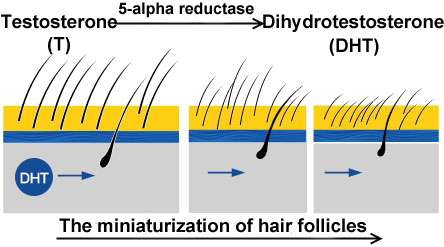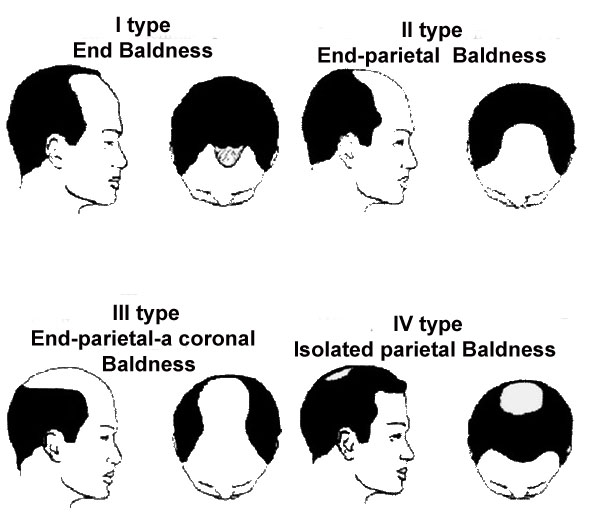Hair loss in men
Androgenic alopecia is the most frequent cause of hair loss; it may affect up to 70% of men and up to 40% of women during their lives. It is due to a genetically inherited presence of receptors in the hair follicles – these receptors are sensitive to the conversion of testosterone into dehydrotestosterone (DHT). In women, a precursor of dehydrotestosterone is dehydroepiandrosterone (DHEA). Under the influence of the enzyme 5-alpha reductase (type 1 and 2), testosterone is converted into dehydrotestosterone. The first and second isomorph of the enzyme differ in their tissue distribution. Type 2 is more active in the scalp, which enhances its role for androgenic alopecia, but both isomorphs are significant in this respect.
The biochemical mechanisms of androgenic alopecia have not been fully understood, but we know that the connection of dehydrotestosterone to receptors in the hair follicles eventually leads to atrophy of the blood vessels that supply the follicles with blood. This causes a gradual miniaturization of the affected follicles, a decrease of hair diametre, shortening of the anagen phase and lengthening of the telogen phase of the hair cycle. Which zones will be affected, and to what degree androgenic alopecia will occur, depends on the number and distribution of the receptors and on their rate of activeness. All this is genetically predetermined and is hard to forecast before the process begins.

Classification of male baldness



